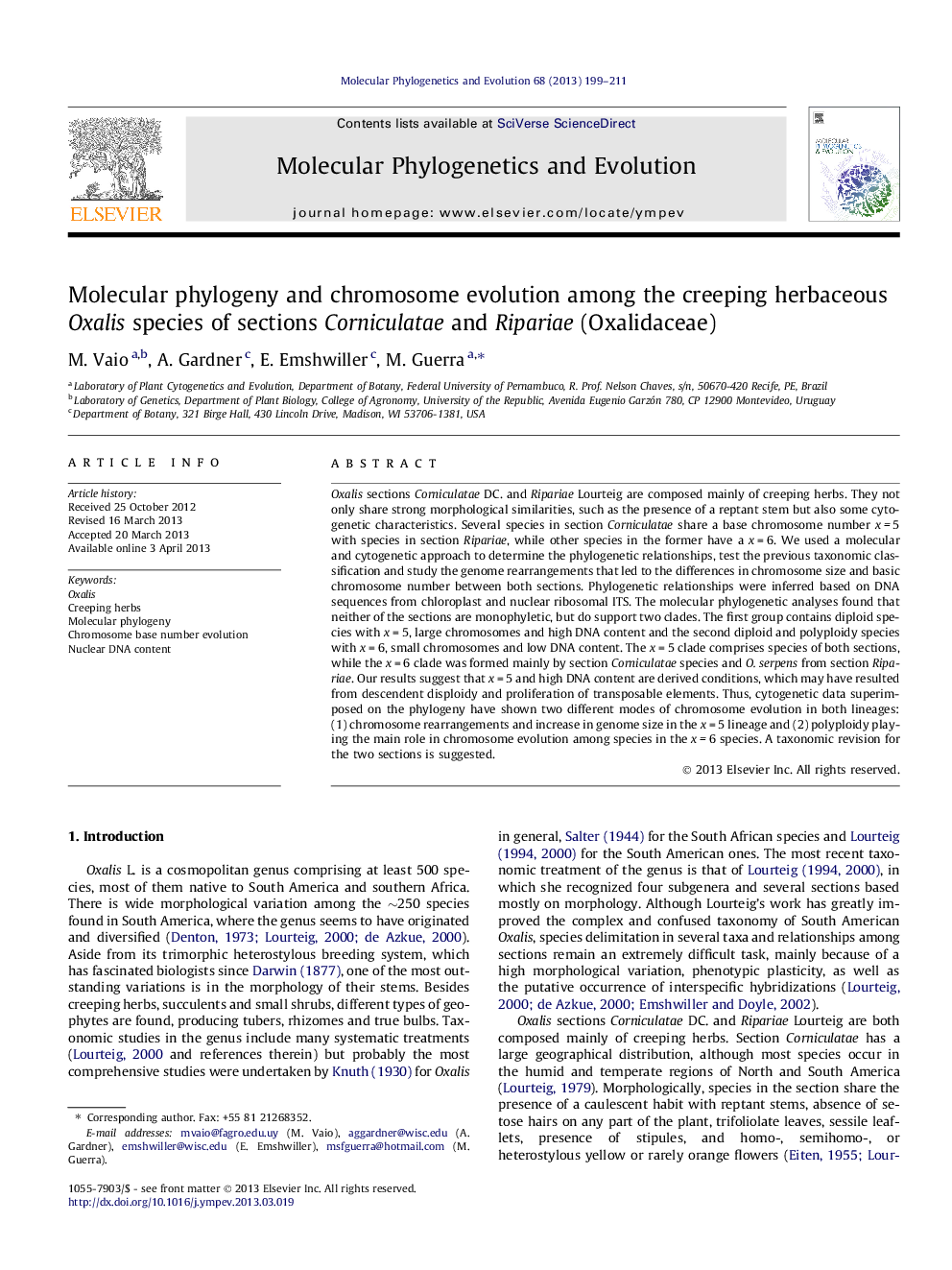| کد مقاله | کد نشریه | سال انتشار | مقاله انگلیسی | نسخه تمام متن |
|---|---|---|---|---|
| 2833990 | 1164281 | 2013 | 13 صفحه PDF | دانلود رایگان |

• Molecular phylogenetic relationships between two sections of Oxalis were assessed.
• Cytogenetic characteristics were also analyzed into the phylogenetic framework.
• Results suggest that neither conform a natural group and should be redefined.
• Two major clades retrieved are consistent with cytogenetic data.
Oxalis sections Corniculatae DC. and Ripariae Lourteig are composed mainly of creeping herbs. They not only share strong morphological similarities, such as the presence of a reptant stem but also some cytogenetic characteristics. Several species in section Corniculatae share a base chromosome number x = 5 with species in section Ripariae, while other species in the former have a x = 6. We used a molecular and cytogenetic approach to determine the phylogenetic relationships, test the previous taxonomic classification and study the genome rearrangements that led to the differences in chromosome size and basic chromosome number between both sections. Phylogenetic relationships were inferred based on DNA sequences from chloroplast and nuclear ribosomal ITS. The molecular phylogenetic analyses found that neither of the sections are monophyletic, but do support two clades. The first group contains diploid species with x = 5, large chromosomes and high DNA content and the second diploid and polyploidy species with x = 6, small chromosomes and low DNA content. The x = 5 clade comprises species of both sections, while the x = 6 clade was formed mainly by section Corniculatae species and O. serpens from section Ripariae. Our results suggest that x = 5 and high DNA content are derived conditions, which may have resulted from descendent disploidy and proliferation of transposable elements. Thus, cytogenetic data superimposed on the phylogeny have shown two different modes of chromosome evolution in both lineages: (1) chromosome rearrangements and increase in genome size in the x = 5 lineage and (2) polyploidy playing the main role in chromosome evolution among species in the x = 6 species. A taxonomic revision for the two sections is suggested.
Figure optionsDownload as PowerPoint slide
Journal: Molecular Phylogenetics and Evolution - Volume 68, Issue 2, August 2013, Pages 199–211